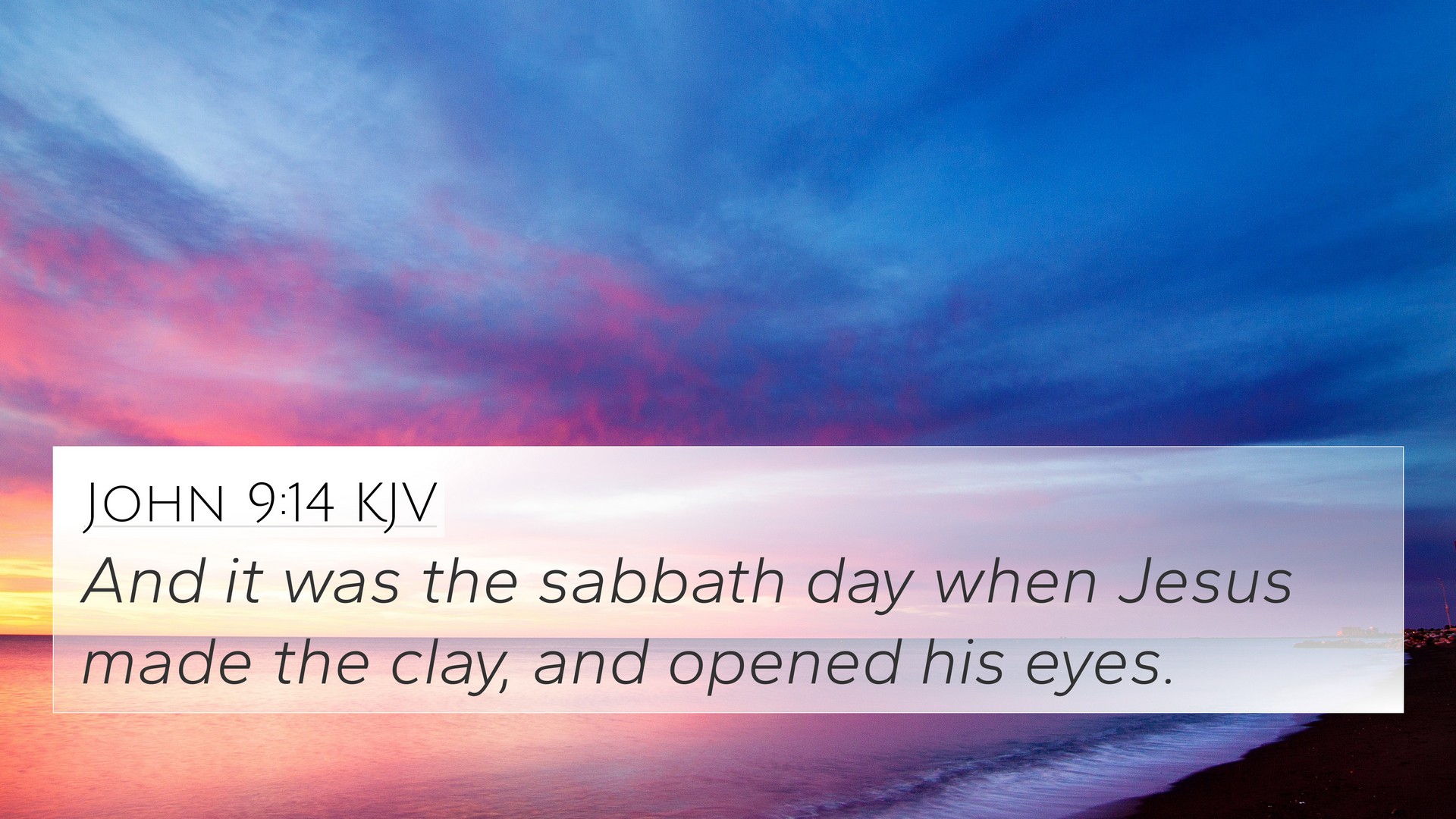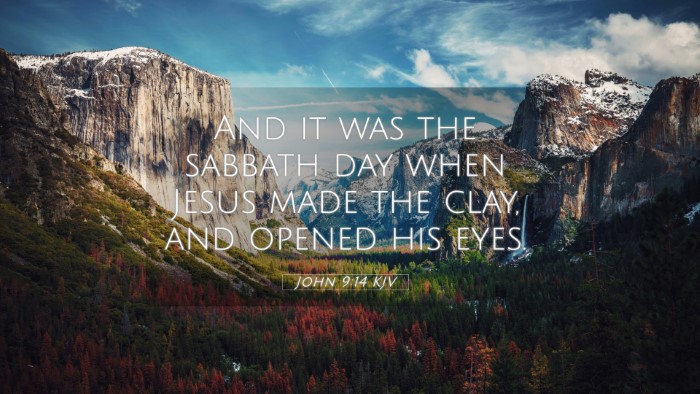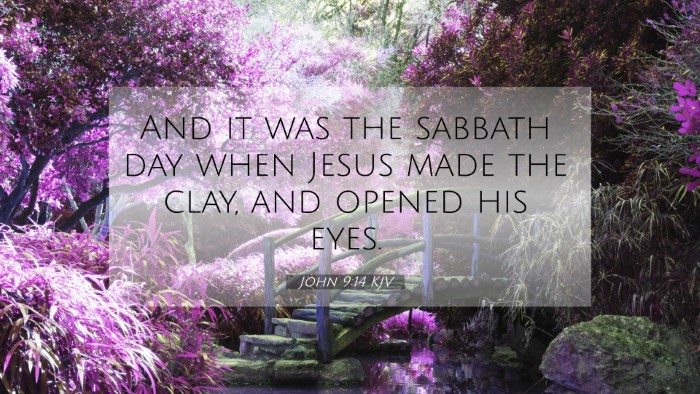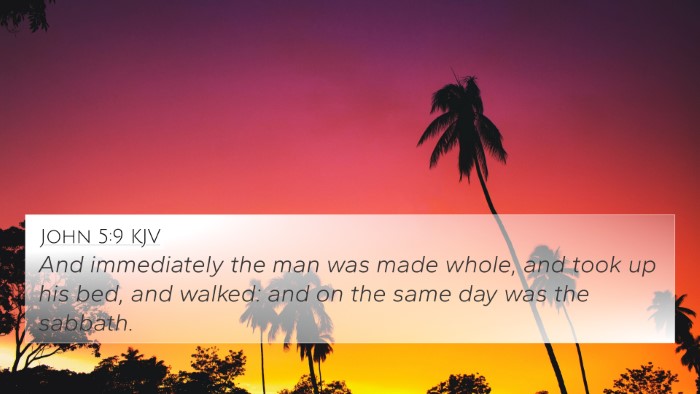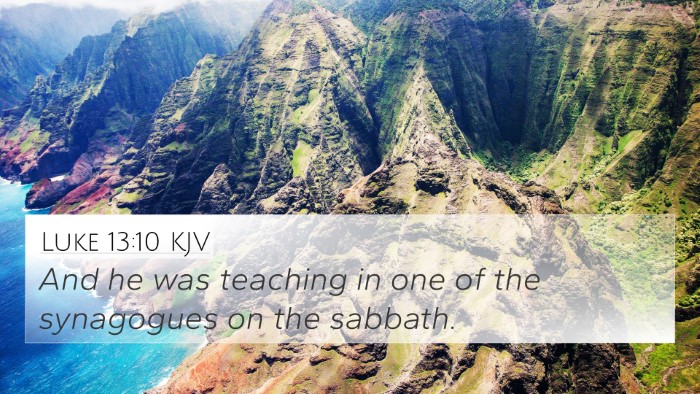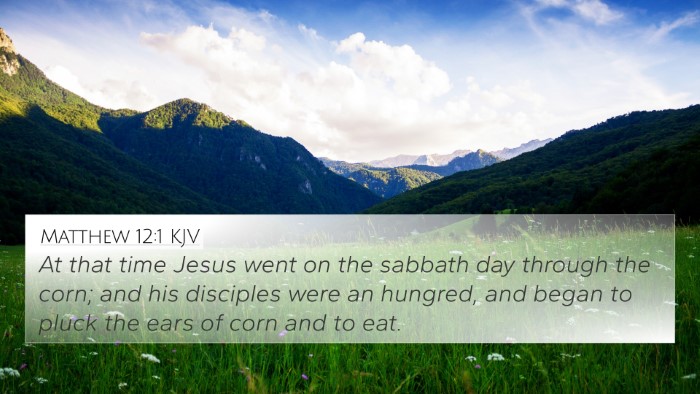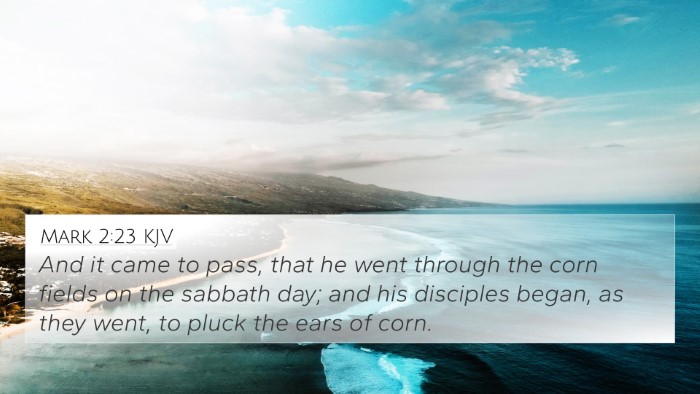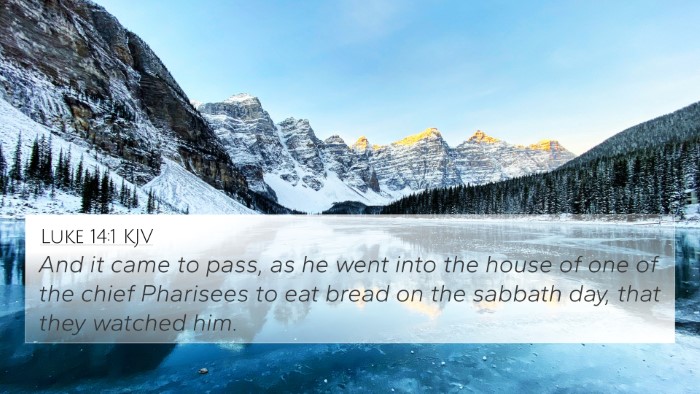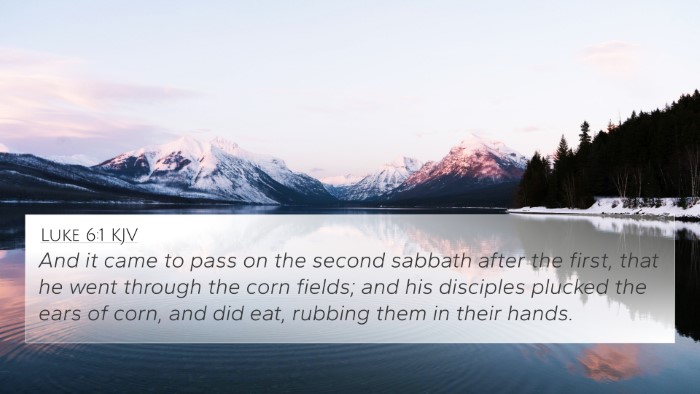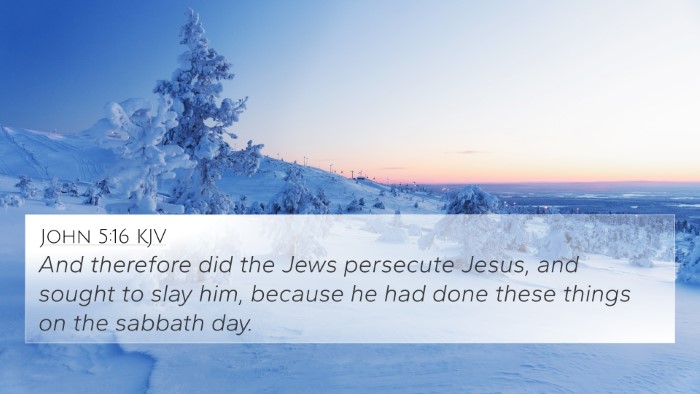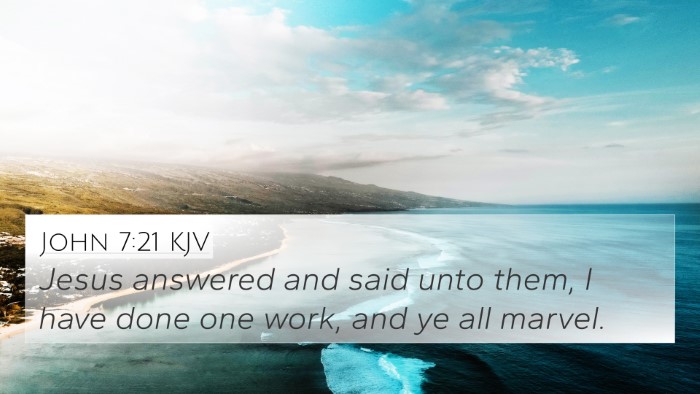Understanding John 9:14
John 9:14 states: "And it was the sabbath day when Jesus made the clay, and opened his eyes." This verse is crucial for understanding the tension between Jesus and the religious leaders of His time, particularly regarding the observance of the Sabbath.
Verse Meaning and Interpretation
This verse highlights several important themes and ideas that are discussed in various public domain commentaries. Below is a synthesis of insights from notable commentators like Matthew Henry, Albert Barnes, and Adam Clarke.
Key Insights
- Miracles and the Sabbath: The act of healing on the Sabbath was controversial. Jesus intentionally performed this miracle to challenge Jewish traditions and reveal the true purpose of the Sabbath (Henry).
- Spiritual Significance: The healing of the blind man serves as a metaphor for spiritual blindness. Jesus' actions emphasize that spiritual awakening often occurs outside the confines of religious law (Barnes).
- God’s Authority: By performing this miracle on the Sabbath, Jesus asserts His authority over the law, suggesting that mercy and necessity take precedence over ritual observance (Clarke).
- Public Reaction: The division among the people, some observing Jesus' miracles as divine, while others accused Him of violating the Sabbath, reflects the polarized views surrounding Jesus (Henry).
- Fulfillment of Prophecy: Jesus' miracles, including this one, were signs that underscored His identity as the Messiah and were in fulfillment of prophetic declarations in the Old Testament (Barnes).
Cross-References
To deepen your understanding, consider the connections between John 9:14 and the following Bible verses:
- Exodus 20:8-11: The command to keep the Sabbath day holy.
- Matthew 12:12: Jesus teaches that doing good on the Sabbath is lawful.
- Mark 2:27-28: Jesus states that the Sabbath was made for man, not man for the Sabbath.
- Luke 14:5: Jesus questions the legality of healing on the Sabbath, highlighting compassion over law.
- Isaiah 61:1: A prophecy concerning the coming of a healer and liberator.
- John 5:16-17: The Jews persecuted Jesus for healing on the Sabbath, emphasizing their opposition.
- Isaiah 29:18: The blind receiving sight reflects a messianic miracle fulfillment.
- 2 Corinthians 4:4: Relates to spiritual blindness and the need for divine revelation.
- Romans 14:5-6: The discussion of observing days and the importance of personal conviction in matters of law.
- 1 Peter 2:9: The call to show forth the praises of Him who called the believers out of darkness into His marvelous light.
Thematic Connections
John 9:14 embodies significant theological and practical implications that can be analyzed through cross-referencing. The act of healing the blind man not only demonstrates Jesus’ power but also reveals the conflict with the established religious norms of the time.
Comparative Verse Analysis
The exploration of John 9:14 alongside parallel scriptures enhances the understanding of Jesus’ mission and authority:
- Healing on the Sabbath: Compare with Mark 3:4, where Jesus emphasizes doing good on the Sabbath.
- Blindness: Relate to John 8:12, where Christ claims to be the light of the world.
- Questions of Authority: See Matthew 21:23-27 where Jesus challenges the authority of the religious leaders.
- Faith in Action: Jointly assess this passage with James 2:26, where faith without works is dead.
Conclusion
John 9:14 serves as a profound reminder of the tension between divine authority and human tradition. By analyzing the verse through cross-referencing Bible texts and understanding its broader implications, one gains deeper insight into the transformative message of Christ. As believers, utilizing tools for Bible cross-referencing, such as concordances and thematic studies, cultivates a richer understanding of Scripture.
